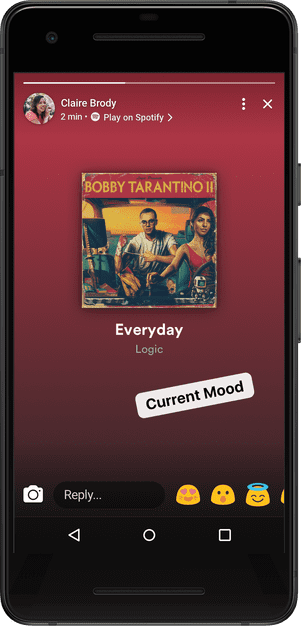|
Getting your Trinity Audio player ready...
|
In April 2016, Mark Zuckerberg made an announcement that sent tremors through the publishing world. Within five years, he predicted, Facebook would primarily consist of video.
Many publishers responded by pouring resources into
Facebook eventually “discovered” that its numbers were off, but by then the damage had been done.
This week, in a conference call with investors, Zuckerberg made another prediction with potentially long-term consequences.
The CEO of Facebook believes that it’s time for the News Feed, the main stream of content on the social network, to make way for Stories, full-screen vertical videos that disappear in 24 hours.
“I just think that this is the future,” he said.

The idea of ephemeral messaging, or Stories, was made popular by
I just think that this is the future.
Facebook is so convinced about the eventual success of Stories that the format is available across all its properties: Facebook, Instagram, WhatsApp and Messenger.
“Public sharing will always be very important, but people increasingly want to share privately too, and that includes both just smaller audiences with messaging and ephemerally with Stories,” Zuckerberg said.
“People feel more comfortable being themselves when they know their content will only be seen by a smaller group and when their content won’t stick around forever. Messaging and Stories make up the vast majority of growth in the sharing that we’re seeing.”
People are now sharing more than 1 billion Stories on Facebook properties every day, the company reported.
It looks like Stories will be a bigger medium than Feed has been.
It’s not all smooth sailing yet, though.
“Our effort to shift Facebook from News Feed first to Stories first hasn’t been as smooth as I hoped,” Zuckerberg said during the call. “We don’t make as much money from them yet as we do from Feed ads.”
“We know it’s not enough to make a new format available; we also need to make it easy for advertisers to optimize their campaigns,” said Sheryl Sandberg, Facebook’s chief operating officer.
She also mentioned that Facebook is developing a tool to convert horizontal News Feed ads into vertical Stories ads.
“I’m optimistic that we’ll get ads in Stories to perform as well as Feed over time, and that the opportunity will be even bigger, because it looks like Stories will be a bigger medium than Feed has been,” Zuckerberg added.
When the “pivot to video” initiative failed to gain traction, there were a lot of complaints from members of the media that this was a narrative pushed by Facebook, and not really something users wanted.
To pre-empt any such concerns this time, Zuckerberg emphasised that this is something “people want,” and embracing Stories is just a natural consequence of that demand.
“People want to share in ways that don’t stick around permanently, and I want to make sure that we fully embrace this,” he said.
Given that Facebook isn’t growing as quickly as it has in the past, it’s looking for places outside of the core feed to sell advertising.
The Silicon Valley giant has had mixed results with massive changes. Its embrace of the mobile worked spectacularly, its “pivot to video” push didn’t.
Diminishing the News Feed and shifting focus to Stories is a bold move toward changing users’ experience of social media. Regardless of whether it succeeds or fails, publishers on Facebook are in for quite a ride as the company pushes for this mega-transition.


